'The fog rolls in quick': The watchful eyes that keep San Francisco boaters safe
San Francisco Bay is one of the busiest waterways in the United States. Throw in quickly-changing weather and strong tides, and things there can get dangerous for those out on the water.
Coast Guard helps keep vessels safe when shipping through San Francisco Bay
FOX Weather’s Max Gorden on how the U.S. Coast Guard offers assistance to ships that are forced to navigate through tough weather conditions.
SAN FRANCISCO -- San Francisco Bay is one of the busiest waterways in the United States. Throw in quickly-changing weather and strong tides, and things there can get dangerous for those out on the water.
That keeps the Coast Guard busy, making sure everyone stays safe.
"We’re either conducting law enforcement operations, doing safety boardings every day," says Petty Officer 1st Class Delbert Wiggins. "We'll do at least three, usually, and search and rescue operations as they pop up."
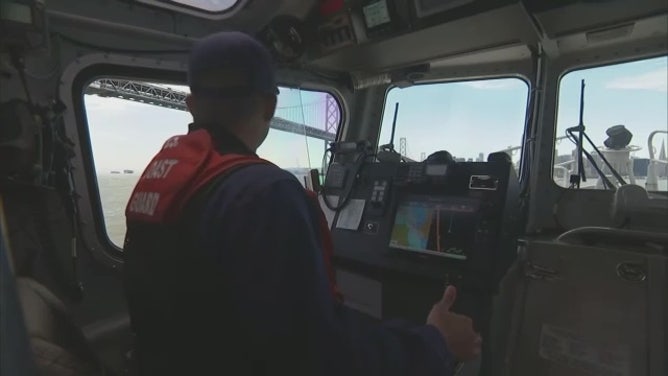
Coast Guard Petty Officer 1st Class Delbert Wiggins patrols San Francisco Bay.
(FOX Weather)
Stationed on Yerba Buena Island in the middle of San Francisco Bay, crews here spend a lot of time out on the water.
"Usually, a crew member averages over 100 hours every six months or so, so well over 200 hours both day and night a year," he said.
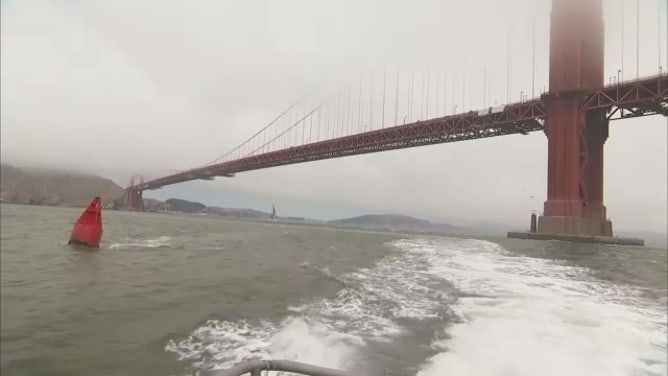
(FOX Weather)
But even for sailors with sturdy sea legs, the bay can be a tough place to navigate.
"Conditions out here? They can change rapidly," Wiggins said.
The fog on San Francisco Bay is one of the area's most iconic features. In 2020, nearly half the days -- 160 in all -- had fog in San Francisco. And the winds and tides can make waters treacherous for smaller boats.
Since 2009, the San Francisco office of the National Weather Service has issued the third-most Small Craft Advisories in the nation, only behind Seattle and Washington, D.C.

Number of times a Small Craft Advisory has been issued by National Weather Service offices since 2009.
(IEM / Iowa State University)
So the weather here can be one of the biggest challenges for ships. Even as we sailed around the bay, we noticed a change in conditions.
"Since we got underway maybe about an hour ago, the winds picked up about 10 knots -- it can change that fast," Wiggins said. "The fog rolls in quick. On a big tidal swing, those currents can pick up relatively quickly."
And those changing conditions can get the ships and boats on this busy bay into trouble.
"This being a densely-populated area, there's a lot of boating traffic out there," he said. "So those container ships being as big as they are, not really stopping very easily. A boater can find themselves stuck in that fog, kind of lost, disoriented and in a shipping channel and right in the way of those big container ships. And that's not a good situation."
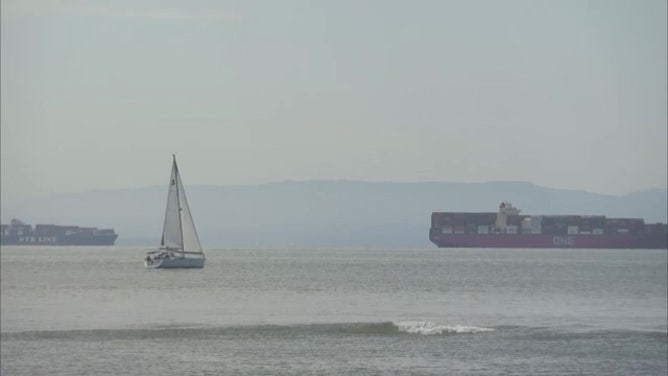
Ships and sailboats sit in San Francisco Bay
(FOX Weather)
But along with rescuing those that fall victim to the dangers of the bay, the Coast Guard also runs a program aimed at helping ships steer clear of obstacles and each other.
"We're ensuring the safety and navigation of all the vessels coming in and out of our port and transiting from one spot to the other," said Chief Petty Officer Christopher Clark, an operations specialist at U.S. Coast Guard Sector San Francisco. "We're ensuring the safety and navigation of all the vessels coming in and out of our port and transiting from one spot to the other."
Clark is in charge of Vessel Traffic Services for San Francisco Bay -- essentially the air traffic control for ships moving in and out of port and through that famous Golden Gate, marking the bay's mouth.
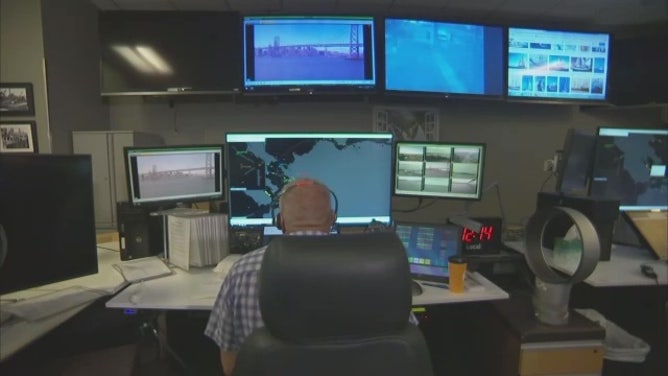
Vessel Traffic Services in San Francisco
(FOX Weather)
"(We're) ensuring that they're following the navigational rules of the road, ensuring that they're following the appropriate rule at the appropriate time, whether that be safe speed, low visibility, making appropriate farseeing arrangements from one ship to another, and then informing them about any other future challenge that they might face."
Using radar and a series of cameras stationed around the bay, Vessel Traffic Services tracks a ship’s progress and talks to them over the radio, letting them know about any hazards.
"The most challenging part of the day would just be the constant influx in the continual changes that occur perpetually throughout day-to-day," Clark said. "No two days are the same."
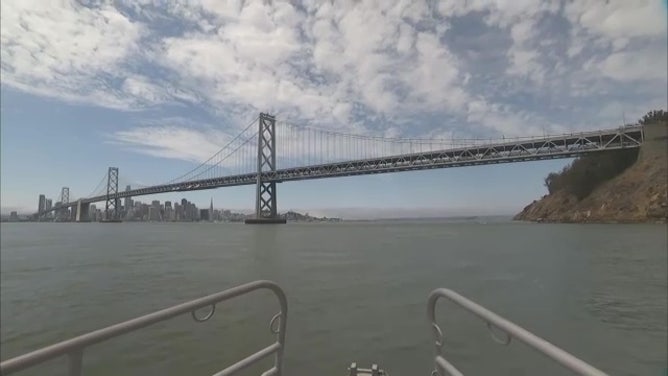
(FOX Weather)
Those changes include the different types of ships they help guide in.
"An ultra-large container vessel coming in and out of Oakland or a vessel carrying 60,000 gallons of fuel of some kind, going upriver into maybe Stockton,(or) Sacramento," Clark said.
To the constantly shifting weather…
"We can go from sunshine and partly cloudy and in the mid-70s to rain and zero visibility, thick fog," Clarks said.
This is why the thing that doesn’t change for vessel traffic services is their constant eye on the sky to keep everyone safe out on the bay.
"I would say we're pretty crucial in that respect," Wiggins said.
